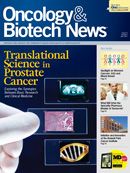Smoking Increases Breast Cancer Risk in Postmenopausal Women
Investigators have reported an increased risk of invasive breast cancer in postmenopausal women who are or were cigarette smokers

Investigators have reported an increased risk of invasive breast cancer in postmenopausal women who are or were cigarette smokers, particularly those who smoked with high intensity and for a long time. The results are from an analysis of 79,990 women aged 50 to 79 years who were enrolled in the prospective Women’s Health Initiative Observational Study from 1993 through 1998. The federally funded study was undertaken to examine major causes of morbidity and mortality in postmenopausal women. Overall, 3250 cases of invasive breast cancer were identified during 10.3 years of follow-up.
The data also showed an increased breast cancer risk in nonsmokers with extensive exposure to passive smoking. However, the authors said that the link between passive smoking and breast cancer risk is suggestive rather than definitive and requires corroboration from other studies.
“Our findings highlight the need for interventions to prevent the initiation of smoking, especially at an early age, and to encourage smoking cessation at all ages,” reported Juhua Luo, MD, of West Virginia University in Morgantown, and colleagues.
The researchers conducted their analysis to determine the associations between active smoking, passive smoking, and breast cancer in postmenopausal women. Information on active smoking included smoking status; women who were current or former smokers were also asked when they started smoking, how many cigarettes they smoked per day, and how many years they had smoked. Former smokers were asked at what age they quit smoking. Questions on passive smoking focused on whether the participants resided in smoking households as children and/or as adults and whether there was smoking at their workplace.
Recent cohort studies have shown an increased risk of breast cancer in women who started smoking at a young age or who smoked for several years, noted Luo and associates. An increased risk of breast cancer in women exposed to passive smoking has also been suggested; however, research to date has generally involved incomplete assessment of exposure information.
The present analysis revealed that current smokers had a 16% increased risk of developing breast cancer after menopause and former smokers had a 9% increased risk. The increased risk was especially pronounced “with smoking of high intensity, of long duration, and [that] started at an early age.”
“Our findings highlight the need for interventions to prevent the initiation of smoking, especially at an early age, and to encourage smoking cessation at all ages.”
—Juhua Luo, MD
Among former smokers, there was a significant inverse association between the time since quitting and breast cancer risk. Also, the increased risk of breast cancer persevered for as long as 20 years after smoking cessation.
The researchers also found that nonsmoking women who had been exposed to extensive passive smoking had a 32% increased risk of breast cancer. Extensive exposure was defined as exposure during childhood ≥10 years, exposure as an adult at home ≥20 years, and exposure as an adult at work ≥10 years. The authors noted that since the risk of breast cancer was confined to the most extensive passive smoking category with a lack of a clear dose response, the association with passive smoking is only suggestive pending confirmation in additional studies.
Finally, current smoking was more strongly associated with lobular cancer than with ductal cancer and with tumors that were hormone receptorpositive (for both estrogen and progesterone) than the other 3 combinations of receptor status.
Luo and colleagues said that the results underscore the need for interventions to prevent women from smoking altogether and the need for interventions to promote smoking cessation at all ages. Future studies should seek to explain how genetic polymorphisms and other risk factors modify the impact of tobacco exposure on breast cancer risk.
Luo J, Margolis KL, Wactawski-Wende J, et al. Association of active and passive smoking with risk of breast cancer among postmenopausal women: a prospective cohort study. BMJ. 2011;d1093. doi:10.1136/bmj. d1016.




